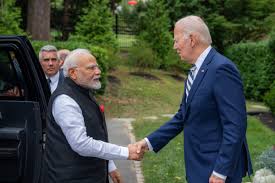Manipur’s Infrastructure Leap: Gadkari’s Backing for Loktak Lake Bridge and NH-2 Integration
News Summary
Union Minister for Road Transport and Highways, Nitin Gadkari, has pledged robust support for a series of infrastructure projects in Manipur, focusing on enhancing connectivity and economic growth. In a recent meeting with M. Asnikumar Singh, former Chairman of the Loktak Development Authority, Gadkari reviewed proposals aimed at upgrading the Moirang–Thanga Road, constructing a new bridge over Loktak Lake, and integrating a 37-kilometer road segment into National Highway-2. These initiatives are designed to improve access in the Thanga constituency and surrounding areas, bolster tourism, and create sustainable livelihood opportunities, aligning with the Government of India’s Act East Policy.
Bridging the Gap: The Loktak Lake Project
One of the most ambitious components of the proposal is the construction of a new bridge over Loktak Lake, aimed at connecting Mukap, Mandha, and Chingthi. This bridge is not just a physical structure; it’s a symbol of progress, linking communities and fostering economic development.
Loktak Lake, the largest freshwater lake in northeastern India, is renowned for its unique floating phumdis (heterogeneous masses of vegetation, soil, and organic matter). The lake is also home to the Keibul Lamjao National Park, the world’s only floating national park, which provides habitat for the endangered Sangai deer.
The proposed bridge aims to enhance inter-regional mobility, facilitating easier access for residents and tourists alike. By improving connectivity, the project is expected to boost eco and heritage tourism, strengthen hospitality and service industries, and create sustainable livelihood opportunities, particularly for youth and rural communities
Upgrading the Moirang–Thanga Road
The expansion and upgradation of the Moirang–Thanga Road are central to the infrastructure proposal. This strategic corridor is vital to the local populace, providing essential connectivity for daily commutes, trade, and access to services.
Improving this road will not only enhance transportation efficiency but also stimulate economic activity in the region. Better roads mean easier access to markets, healthcare, and education, contributing to the overall development of the area.
Integrating with National Highway-2
The proposal includes integrating a 37-kilometer road segment into National Highway-2, elevating its national strategic and economic relevance. This integration is expected to streamline transportation, reduce travel time, and facilitate the movement of goods and people across the region.
By connecting local roads to the national highway network, the project aims to open up new economic opportunities, attract investments, and promote regional development.
FAQs
1. What is the significance of the Loktak Lake bridge project?
The bridge aims to connect Mukap, Mandha, and Chingthi, enhancing inter-regional mobility, boosting tourism, and creating sustainable livelihood opportunities in the region
2. How will upgrading the Moirang–Thanga Road benefit the local population?
Improving this strategic corridor will enhance transportation efficiency, stimulate economic activity, and provide better access to markets, healthcare, and education.
3. What is the Act East Policy, and how does it relate to Manipur’s infrastructure projects?
The Act East Policy is India’s initiative to strengthen economic and strategic relations with Southeast Asian countries. Infrastructure development in Manipur, such as road and bridge projects, aligns with this policy by enhancing connectivity and regional integration.
4. How will integrating a road segment into National Highway-2 impact the region?
Integrating a 37-kilometer road segment into NH-2 will streamline transportation, reduce travel time, and facilitate the movement of goods and people, promoting regional development.
5. What measures are being taken to ensure environmental conservation in these projects?
The projects aim to incorporate sustainable practices to minimize environmental impact, preserving the unique ecosystems of Loktak Lake and Keibul Lamjao National Park.




